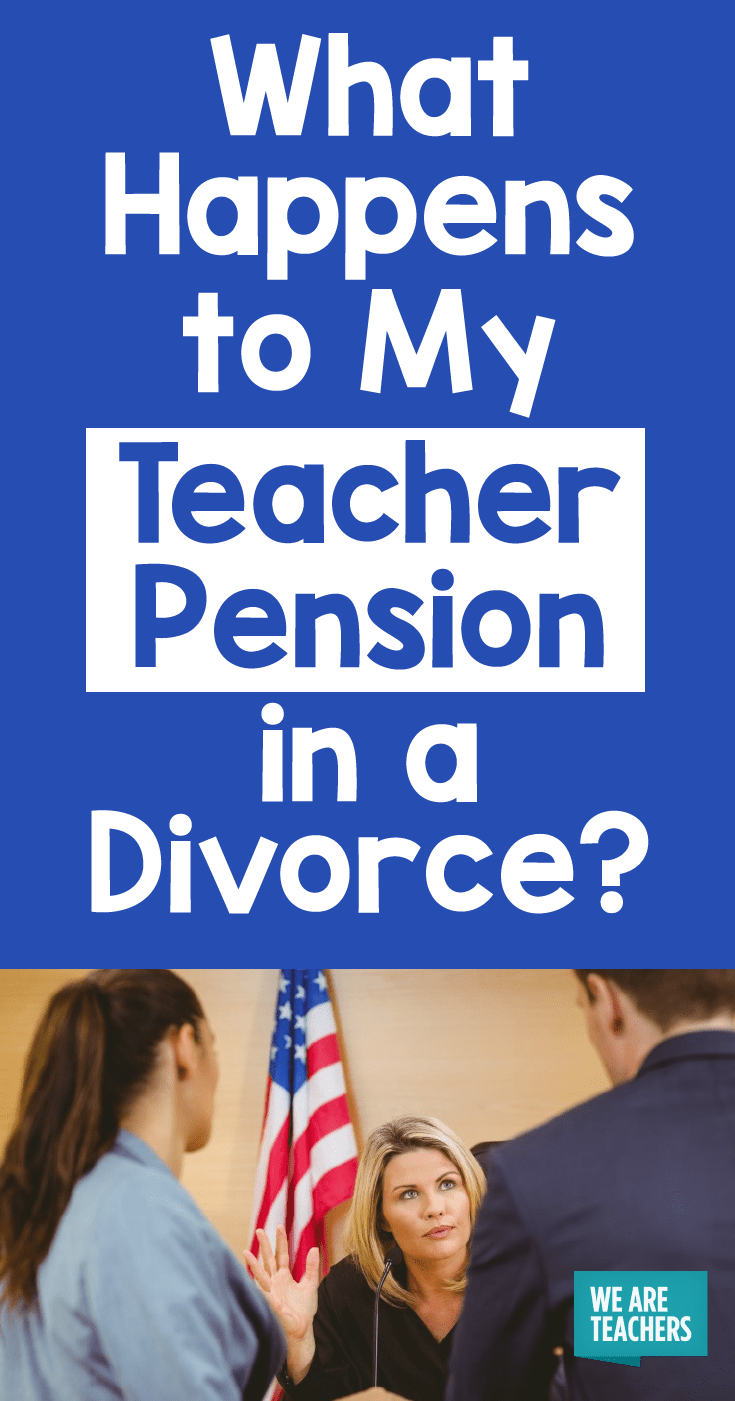Divorce can appear in many ways: quick, ugly, obvious, needed, or sad. No matter the circumstances or process, you can treat a teacher pension in a divorce numerous ways.
*Always be sure to discuss your situation with a divorce attorney in your state, as rules may vary between states and state pension plans.
You can leave your pension as is.
It may be the case that the spouse of the teacher earns more money. Or the judge may decide to split assets other than the pension. In this case, the pension of the teacher is left as is, and all benefits will remain with the teacher. This often happens when the spouse of the teacher has substantial assets or their own pensions already set aside. It can work out that the teacher’s pension benefits are similar to the lifetime benefits of the spouse’s retirement benefits. While this situation is rare, it makes for a financially cleaner divorce than splitting pension plans.
It may be split up at retirement.
It’s often the case that the spouses will divide the teacher’s pension. All retirement assets (including a teacher pension) get a QDRO (Qualified Domestic Relations Order). This is a court document that determines when, how, and how much of certain retirement assets are split up and paid to either party. In the case of a pension during a divorce, a pro-rata amount of the benefit earned up until the divorce date is split. After this date, the teacher is able to keep 100 percent of the benefits. However, this can be adjusted through divorce proceedings. Many states have their own specific QDRO plans for pensions. Ensure the correct legal process is used by consulting your state’s pension documents.
Your retirement benefits may be accelerated.
In most cases, the QDRO specifies that the spouse delay collection of benefits until the teacher collects their share in retirement. Under rare circumstances, benefits can be accelerated and paid out to the spouse before the teacher. There may be a possibility, depending on the pension plan, for the spouse to roll out their portion to an IRA at the end of the divorce proceedings.
You can refund and split up unvested contributions.
If the teacher is unvested in their pension (with the number of years being specific to the pension plan), then all contributions are refunded and split according to the QDRO. The QDRO determines the timing of this distribution. It’s done either immediately following the divorce or at retirement.
Some benefits may be refundable.
You may have overpaid, unused, or refundable service benefits upon retirement. These benefits will be split according to the QDRO. These refundable benefits can include:
- Survivor benefit contributions (if there are no dependent beneficiaries who could receive them)
- Service credit contributions over and above what is needed to receive a full pension
- Refunded payments as associated with a pension upgrade
- Refund of contributions for excess optional service and unused early retirement contributions
So what should you be concerned about with regards to your pension?
As you go through divorce proceedings, the value of your pension with regards to other assets may be surprising. For example, a $40,000/year pension is the equivalent of having a 401(k) with a $1,000,000 balance in terms of generating the same amount of annual income. You’ll want to keep your pension as much intact as possible. That way, you retain this lifetime benefit and have some other cash / investable assets. Walking away with a partial pension and the house may not be the most financially sound outcome. However, each divorce is unique so plan with an attorney and your spouse as to what assets make sense for each of you to keep.


